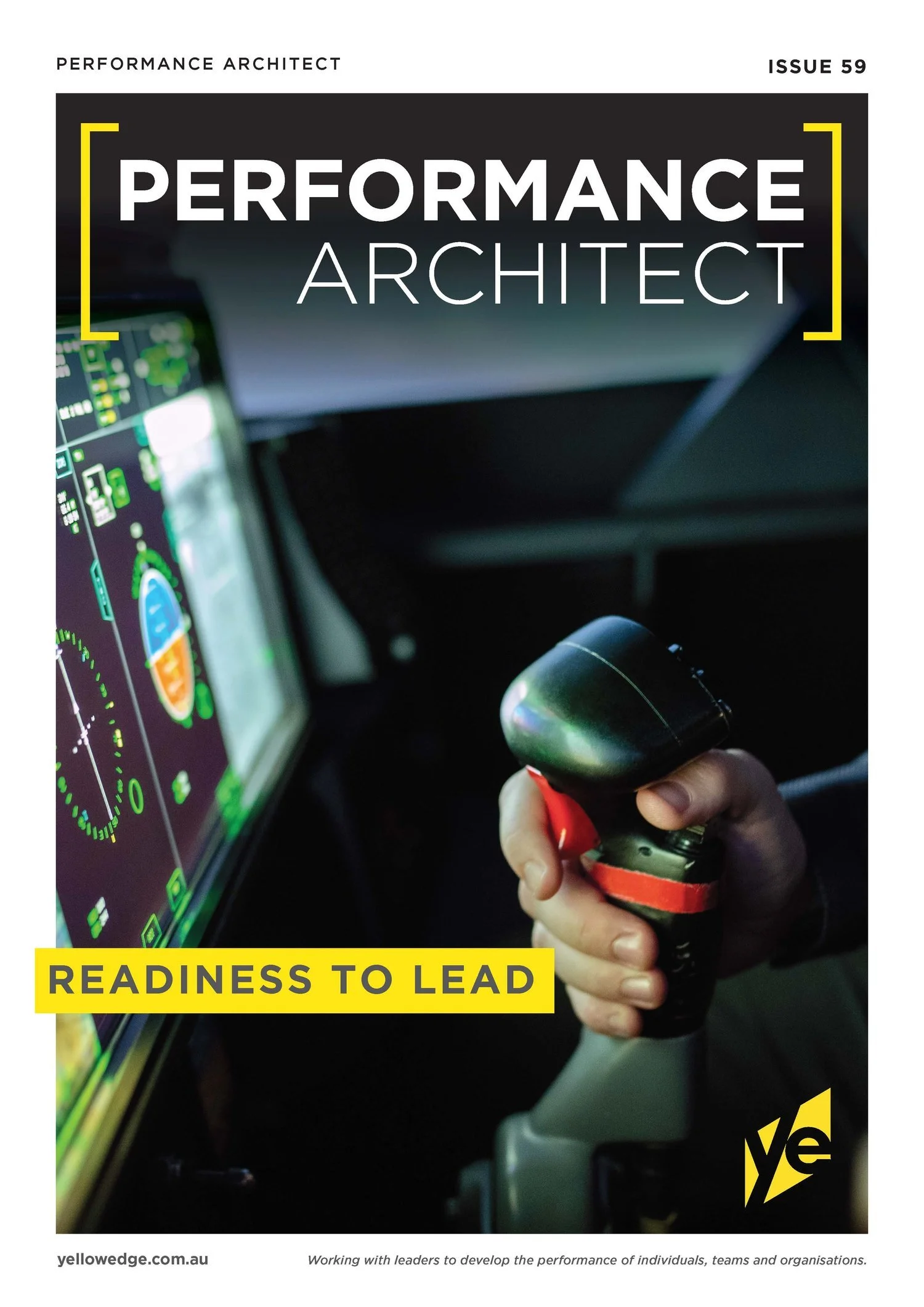59. Readiness to Lead
by Andrew Simon
Leading people is a complex endeavour, simply because people are inherently complex, as are the situations people create for themselves.
Given the complexity, one would expect that preparing people for their roles as leaders would be a common feature in organisations.
It continues to surprise us that preparing people to be ready to lead at all levels where leadership is required is not a very high priority in many organisations we come across.
Yes, we do see the occasional high profile talent program. But often these programs are for people who already have some experience in leadership, who are already in leadership roles or have participation that is limited to a particular cohort or a group of select individuals.
Admittedly, the use of ‘acting up’ or ‘higher duties’ is common and is commonly seen as a form of preparation…… in theory. In practice however, higher duties are often taken to be a form of ‘babysitting the role’ until the incumbent returns or someone is recruited, limiting opportunities for experimentation, risk taking and change. A lack of debriefing, reflection and learning from higher duty experiences also limits its usefulness and potential as a form of leadership preparation.
To be fully effective as a form of leader preparation, the experience of acting up or higher duties does need to be set up, supported and debriefed well. These opportunities need to be seen and structured as actual leader development and preparation experiences rather than just a workforce resourcing mechanism.
Simulations as a form of leader preparedness
Perhaps another way of providing some form of preparation and readiness is to expose people to simulated scenarios before they assume supervisory and leadership roles.
Simulations are the imitation or representation of a real-world scenario, situation or set of dynamics.
Simulations are not a new method of learning.
Georges-Louis Leclerc, Comte de Buffon (1707–1788), was a celebrated French naturalist whose needle-tossing experiment is arguably a very early, formal example of using a simulation to approximate an important physical constant. A technique actually revived by Ulam in 1946 to design the hydrogen bomb.
We are of course familiar with digital based simulations used for the training and preparation of people from all kinds of technically based professions including pilots, engineers, astronauts, surgeons, architects, the armed forces and in many, many other contemporary professions. Simulations are also increasingly used in the treatment of phobias and PTSD.
Simulations have also been evaluated to bring exceptional returns on investment with 33% higher engagement, 67% better knowledge retention, 33% faster skill development and 95% completion rates over more traditional learning methods.
So, if simulations can be useful in all these settings and as an effective learning methodology why not in the preparation of leaders?
Research and lived experience would both suggest that behavioural capabilities essential to effective leadership are as hard if not harder to learn than technical skills. If so, it would seem reasonable to suggest that the use of digital simulations may be useful in preparing people in advance of stepping into leadership roles.
As a learning methodology, simulations are grounded in experiential learning theory. This theory stresses the importance of using concrete experiences to reflect on, to build working personal concepts and theories about the experience and testing and applying these in real life. Simulations provide concrete experiences that are safe and risk free.
As with any learning methodology, simulations are only effective if deployed and used well. Leadership based simulations work especially well when:
situations and scenarios are sufficiently complex to challenge, engage and raise curiosity levels and provide useful experiences that participants can reflect on
there are time or other forms of constraints, as in real life to help drive focus and urgency
there is an acceptance that there will be some level of failure which then encourages experimentation
learning from the simulation is drawn out by a skilled facilitator and supported by detailed reporting on individual decisions and behaviour
they offer some novelty and enjoyment using gamification features and design
The deployment of facilitated digital simulations is a relatively easy and effective way to prepare people in a risk-free environment for the challenges and opportunities of supervision and leadership.
There is also a strong imperative for organisations and their leaders to be future ready and to be able to leverage digital tools for greater organisational effectiveness. While there is no one way to do so, it is essential for organisations to discover and understand how they can create future ready, digitally confident leaders and digitally savvy workforces through the deployment of digital tools like simulations.
Leading people is complex. Helping people to be a little bit more ready for such complexity is something that will surely pay off for the emerging leader and the people that they will lead.
INTERESTED FOR YOUR LEADERS?
SPEAK TO YELLOW EDGE TODAY ABOUT OUR LEADERSHIP, CHANGE AND COACHING DIGITAL SIMULATIONS.
by Andrew Simon, Co-Founder and Chief Executive, Yellow Edge. February 2022
Yellow Edge is a local, privately owned Canberra based consulting company focused on helping individuals, teams and organisations to achieve high performance. Yellow Edge is a certified BCorp. BCorp companies make decisions that make a positive impact on their employees, customers, suppliers, community, and the environment. https://www.bcorporation.com.au/
Cover photo by ThisIsEngineering


